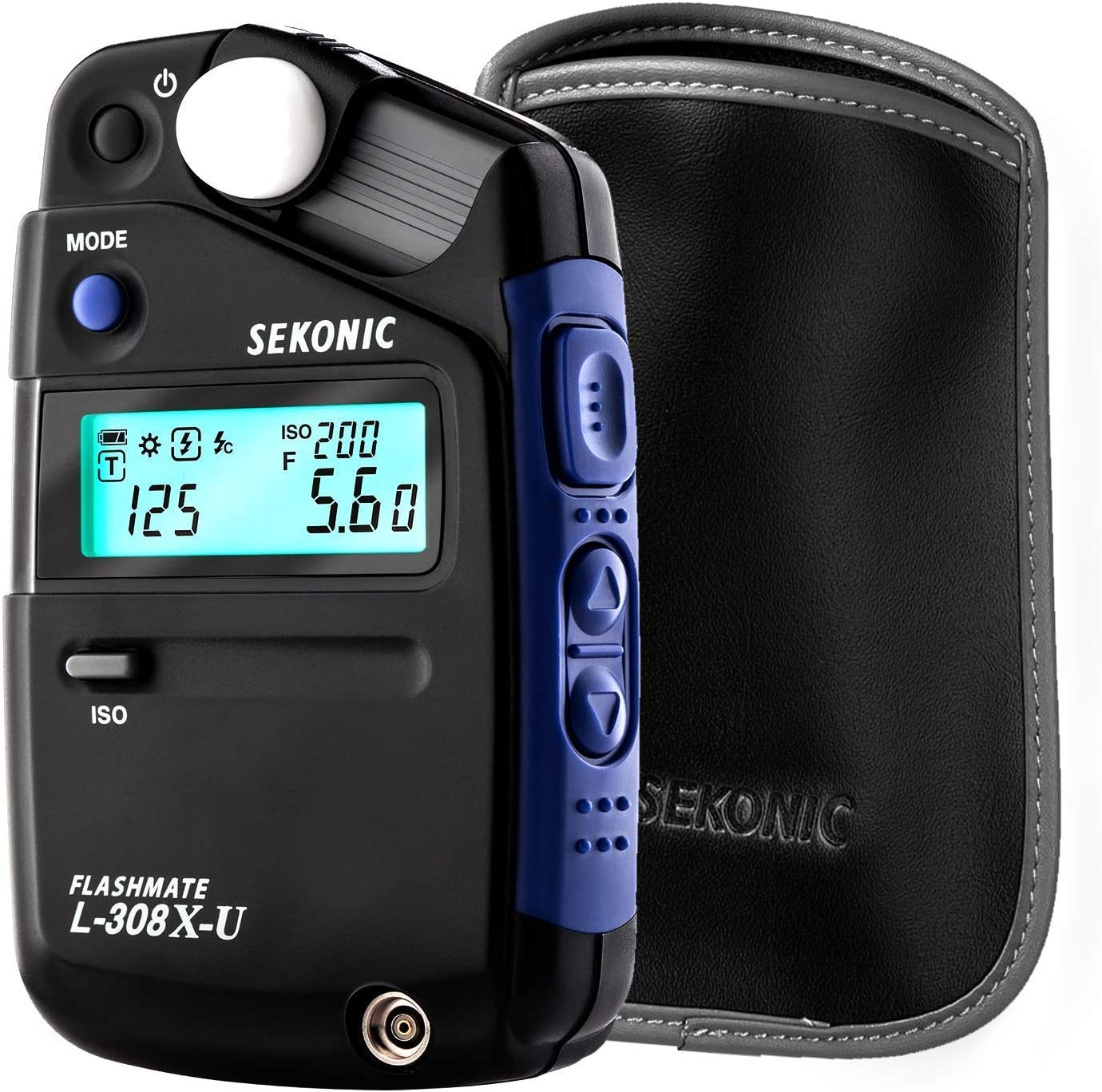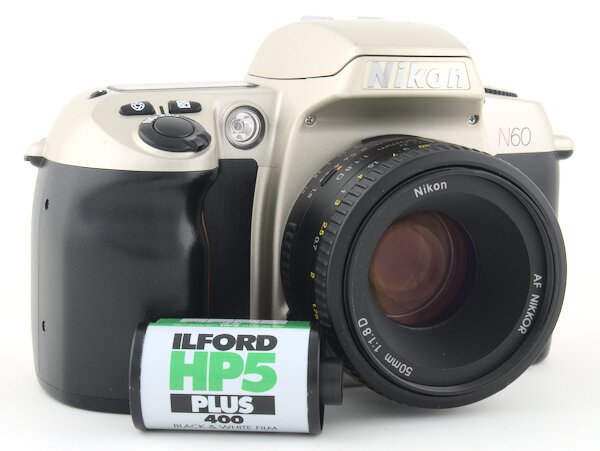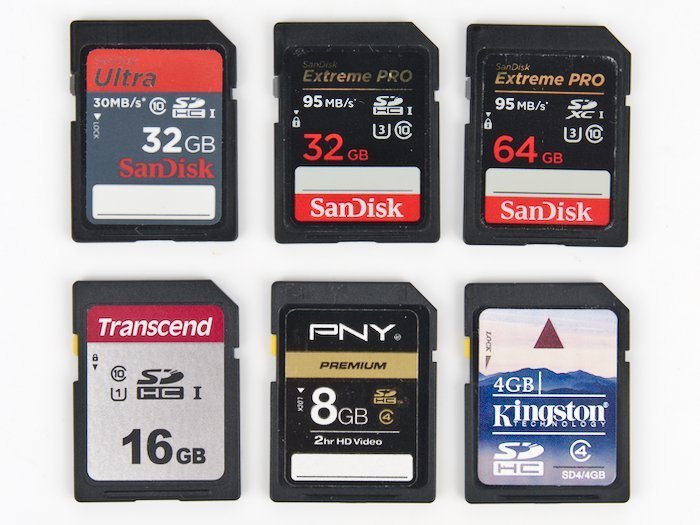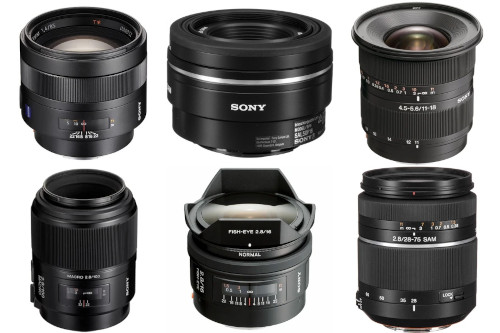
The 10 Best Light Meters for Photography in 2022
- Nathaniel Stephan
- Light meter
- November 1, 2022
Table of Contents
Checking and adjusting settings based on what you see on your camera screen is not fast, accurate, or professional. If you’re doing analog film photography, you don’t have a screen to check.
A light meter is an important tool for photographers, videographers, and cinematographers. Without a light meter, you’re not going to be able to accurately recreate lighting setups.
This list of the best light meters will help you choose one that fits your needs. There is a range of light meters available, from entry-level to high-end professional models.
The more you pay, the more features you get, and the larger the meters are. So paying more isn’t always the best thing to do if you want a small, easy to carry meter.
Affiliate Advertising Disclosure
Outside the Shot is a participant in the Amazon Services LLC Associates Program, an affiliate advertising program designed to provide a means for sites to earn advertising fees by advertising and linking to Amazon.com.
As an eBay Partner, I may be compensated if you make a purchase. I also participate in affiliate advertising programs with KEH and Adorama. More can be found on the Affiliate Disclosure page.
Best Light Meters on an Affordable Budget
These are the best light meters that have the most commonly used features, without being expensive.
1. Sekonic L-308X-U Flashmate Light Meter
https://www.outsidetheshot.com/misd/sekonic-l-308x-u-flashmate-light-meter.jpg does not exist- Accurate exposure readings to a tenth-of-a-stop.
- Capable of ambient and flash metering.
- HD Cine Mode for videographers and cinematographers.
- Shutter-speed range of 60-seconds to 1/8000 of a second.
- f/stops from f/1.0 to f/90.9.
- Ambient EV range from 0 to 19.9.
- Sliding lumisphere for incident metering or reflected light measurements.
The Sekonic L-308X-U is a great light meter for photography. It is small enough to easily fit in a pocket, light, and only needs a single AA to operate.
It is capable of both flash and ambient light readings, in either incident or reflected light modes. The LCD screen on the meter is backlit, which will automatically turn on in low light when the EV reading is less than 5.
An advantage of the older style LCD screen is that it can easily be read in direct sunlight. This makes the meter usable with one hand, as you don’t need the other to shade the screen. So products with newer screens have their disadvantages on top of being more expensive to buy.
Photo Mode can display measurements in EV, as well as being set for shutter priority or aperture priority. Those modes will display readings as shutter speed or f/stop once the other settings have been entered.
HD Cine Mode lets you take light meter readings based on frame rates and shutter angles.
Cine Mode also uses frame rates and shutter angles, but additionally allows for readings in Lux (lx) and foot-candle (fc).
Check current prices on Amazon and eBay.
2. Gossen Digipro F2 Light Meter
https://www.outsidetheshot.com/misd/gossen-go-digipro-light-meter-4033-2.jpg does not exist- Shutter speed range of 60 minutes to 1/8000 of a second.
- ISO range of 3.2 to 8000.
- Automatic battery check and auto off.
- CINE value of 8 to 64 including 25 and 30.
- Extension factors 1.0 to 240.
- Calculation for multiple light sources.
- Contrast Measurement.
The Gossen Digipro F2 is similar in design to the Sekonic L-308X light meter but has a slightly higher price. Though, there can be deals that will make it a more affordable unit.
This light meter gives you all the features you’ll need for the vast majority, if not all of you photography, videography, or cinematography needs.
The light meter runs off of a single AA and has an LCD screen that can be read in direct sunlight. This makes it a great choice to use with flash outdoors during the day. Battery life is also going to be excellent.
You can easily fit the light meter into a pocket or carry it around your neck. It only weighs 95g (3.35oz), making it easy to carry around with any camera.
Check current prices on Amazon and eBay.
3. Kenko KFM-1100 Auto Digi Meter / Minolta Spotmeter VF
https://www.outsidetheshot.com/misd/minolta-spotmeter-f-review.jpg does not existThe Kenko KFM-1100 is the same as the Konica Minolta Auto Meter VF, which I have previously reviewed. Kenko bought the rights and designs to the meter when Konica Minolta left the photography market.
It has a basic LCD screen and is powered by a single AA. Two benefits of that light meter design are that it will provide excellent battery life and you can view the screen in full sun.
The ergonomics of the light meter are good. While the build quality isn’t incredible, it is good enough.
However, the price is higher than the other comparable light meters, like the Sekonic L-308X, while having fewer features and smaller measurement ranges. That doesn’t make it a bad buy, as long as you buy one used.
You can occasionally find a used Konica Minolta Auto Meter VF for less than $150 down to $100 on eBay. At $100 it is the best cheap light meter for photography.
Check current prices on Amazon and eBay.
Best Light Meter for Professionals
The best light meters for professional use provide advanced features and more durable builds. There will also be accessories that will modify how incident or reflected exposure readings are taken.
4. Sekonic Speedmaster L-858D-U Light Meter
https://www.outsidetheshot.com/misd/sekonic-speedmaster-l-858d-u-light-meter.jpg does not exist- Measures flash duration.
- Measures High-Speed Sync (HSS).
- PocketWizard module available for wireless control of lights.
- Elinchrom & Phottix module available for Skyport triggering and control.
- Capable of reading as low as 0.1 lx of illuminance.
- Dust and splash proof.
- Shutter speed range from 30 minutes to 1/64,000 of a second.
- ISO range from 3 to 13,107,200.
- 2.7" color touch screen.
The Sekonic Speedmaster L-858D-U is the best light meter for photography. No other light meter comes close to the features that are included.
While the meter is not going to easily fit into a pocket, batteries won’t be an issue. It runs off of 2x AAs or can be powered by USB.
Having the ability to measure flash duration and high-speed sync is important when trying to freeze action, get shallow depth-of-field with HSS, or overpower the sun. There won’t be any second guessing of a photo when you open it in post.
A benefit for landscape photographers is the 1-degree spot meter that displays full information. Ambient exposure readings range from EV 1 to EV 24.4.
For cinematographers, the meter can take readings as low as 0.1 lx of illuminance. This makes it possible to accurately meter scenes lit by candle light.
Check current prices on Amazon and eBay.
5. Kenko KFM-2200 Cine and Flash Meter
https://www.outsidetheshot.com/misd/kenko-kfm-2200-cine-flash-meter.jpg does not exist- Shutter speed 30 minutes to 1/16,000 of a second.
- ISO range of 3 to 8000 in 1/3 stop increments.
- LCD screen can be seen in direct sunlight.
- Memory can store up to 10 values.
- Displays both analog and digital readings.
- Shadow-based and highlight-based spot measurements.
The Kenko KFM-2200 is an update to the KFM-2100, which is the same as the Minolta Flash Meter VI. The product design dates back to 2003.
As the meters have been out for a long time, you can save a big chuck of money by buying a used meter.
Only a single AA is needed to power the light meter. Not having a color touch screen, means the battery life is going to be significantly longer than the Sekonics.
Kenko lists the battery life as ~30 hours of continuous operation. Sekonic does not have a specification for how long their meters will operate.
The KFM-2200 is also quite light weight coming in at only 185g without a battery. That’s ends up being about half the weight of the Sekonic L-858D, with batteries.
Check current prices on Amazon and eBay.
6. Sekonic LiteMaster Pro L-478D-U Meter
https://www.outsidetheshot.com/misd/sekonic-l-478d-u-lightmeter.jpg does not exist- 2.7" Digital touchscreen display.
- Ambient light readings from EV -2 to 22.9.
- Aperture and shutter priority metering.
- ISO range 3 to 409,600 in 1/3 step increments.
- Shutter speed range of 30 minutes to 1/64,000 of a second.
- Cine Mode with frame rate & shutter angle.
- Optional 5° viewfinder for spot metering.
- Upgradable firmware through USB port.
The Sekonic LiteMaster Pro L-478D-U meter sits between the L-308X-U and L-858D-U in terms of price and features. It is a great choice if you want a greater range for measuring EV, shutter speeds, and setting ISO than the L-308X-U has.
Power will need to be provided by 2x AAA batteries. Rechargeables can be used, which is convenient if you already own them.
With no spot meter, the L-308X-U is light and small enough to stick in a pocket. It does have the same dust and splash proof build as the more expensive L-858D-U.
One potential downside of the meter is that the manual is not very thorough. For tasks such as calibrating the meter, you may need to rely on YouTube tutorials.
Check current prices on Amazon and eBay.
Best Light Meter for Specific Needs
These are the best light meters for specific tasks or preferences.
7. Gossen Digiflash 2 Light Meter
https://www.outsidetheshot.com/misd/gossen-go-digiflash-light-meter.jpg does not exist- Smallest digital light meter on the list.
- No flash metering sync port.
- Two button controls can make changing settings slow.
- Ambient light metering measurement range EV 0 to 18.
- ISO range of 6 to 3200 in 1/3 stop increments.
- Built in thermometer.
The Gossen Digiflash 2 is by far the smallest and lightest meter on the list. It weighs just 40g, including the battery.
The small size comes with a reduction of features and ranges of measurements when compared to the other meters on the list.
For everyday use, this is going to be the best digital light meter for film photography. No one likes hauling around a larger kit than they have to.
It uses a 3V CR2032 coin cell which is popular for use in watches. While not as convenient as a AA, they are small, cheap, and easy to find.
Check current prices on Amazon and eBay.
8. Sekonic L-398A Studio Deluxe III Analog Meter
https://www.outsidetheshot.com/misd/sekonic-l-398a-light-meter.jpg does not exist- Completely analog exposure meter.
- Does not require power.
- Very robust and durable.
- Popular with cinematographers.
- Direct reading slide set available.
The Sekonic L-398A is a analog meter with a couple advantages over its digital counterparts.
The first is that it can take continuous measurements. Holding down the metering button allows you to “walk the set” to check light levels.
Releasing the metering button locks the needle into place. Allowing you to see all combinations on settings for both cine and stills on the exposure calculation dial.
The second advantage is that it does not require batteries to operate. That alone makes it attractive to have as a backup cine digital light meter.
Check current prices on Amazon and eBay.
Best Light Meter for Landscape Photographers
9. Pentax Spotmeter V Light Meter
https://www.outsidetheshot.com/misd/pentax-spotmeter-v-review.jpg does not exist- Analog 1degree spotmeter.
- Gigantic viewfinder.
- EV range of 1 to 19.
- Exposure calculation dial has shutter speeds from 4 minutes to 1/4000 of a second.
The Pentax Spotmeter V has been out of production for a long time. If you want one, you’re going to have to hunt down a used copy.
Beyond taking light measurements, there is a very dim light that will illuminate values on the low end of the EV range.
Many landscape photographers are a fan of the meter because it makes using the zone system easy.
The meter is powered by 3 LR44 button cell batteries. These can easily be found online or in a big box store.
Check current prices on Amazon and eBay.
10. Minolta Spotmeter F Light Meter
https://www.outsidetheshot.com/misd/minolta-spotmeter-f-review.jpg does not exist- Capable of taking digital ambient and flash readings.
- Large viewfinder.
- Can store 1 reading in memory.
- ISO range from 12 to 6400
- Shutter speed range of 30 minutes to 1/8000 of a second.
The Minolta Spotmeter F is a digital alternative to the Pentax Spotmeter V. Many more features are included, as well as automatic calculation of exposures.
It is the best light meter to get if you are on a budget and only need to spot meter. For instance if you are using a medium or large format camera to take a landscape photo.
If you want one, your only option is to find one on the used market. They have not been in production for a long time. With a little patience, you can find plenty of deals on a unit.
There is a light to illuminate the reading in the viewfinder. The LCD does not have a backlight, which is unfortunate.
Another option is the Pentax Digital Spotmeter, but I’m not a fan of it. A huge part of the bottom of the viewfinder is taken up by an LCD that shows the EV reading.
Check current prices on eBay.
Best Light Meter Features
Handheld vs Digital Camera Light Meters
Handheld light meters have product features that are not found on cameras. This is important when working with lights that are not part of a flash system made by a camera manufacturer, such as Canon.
Incident vs Reflected Light Meters
Light meters can take different types of readings. Depending on the subject you are attempting to photograph it can be better to take an incident or reflected reading to get the exposure you want.
Incident light meters measure the amount of light falling on the meter’s diffusion sphere or other accessories used on the sensor. This allows incident exposure readings to provide a high level of accuracy.
By moving the incident meter around, accurate readings can be taken at specific locations in a scene.
Reflected light meters measure the light that is reflected by a scene. This is the type of light meter found in any camera that has a built-in light meter.
Reflected meter readings can be off if there are bright highlights that you would experience during a sunrise or sunset. A bad reading could result in the foreground being under or overexposed.


